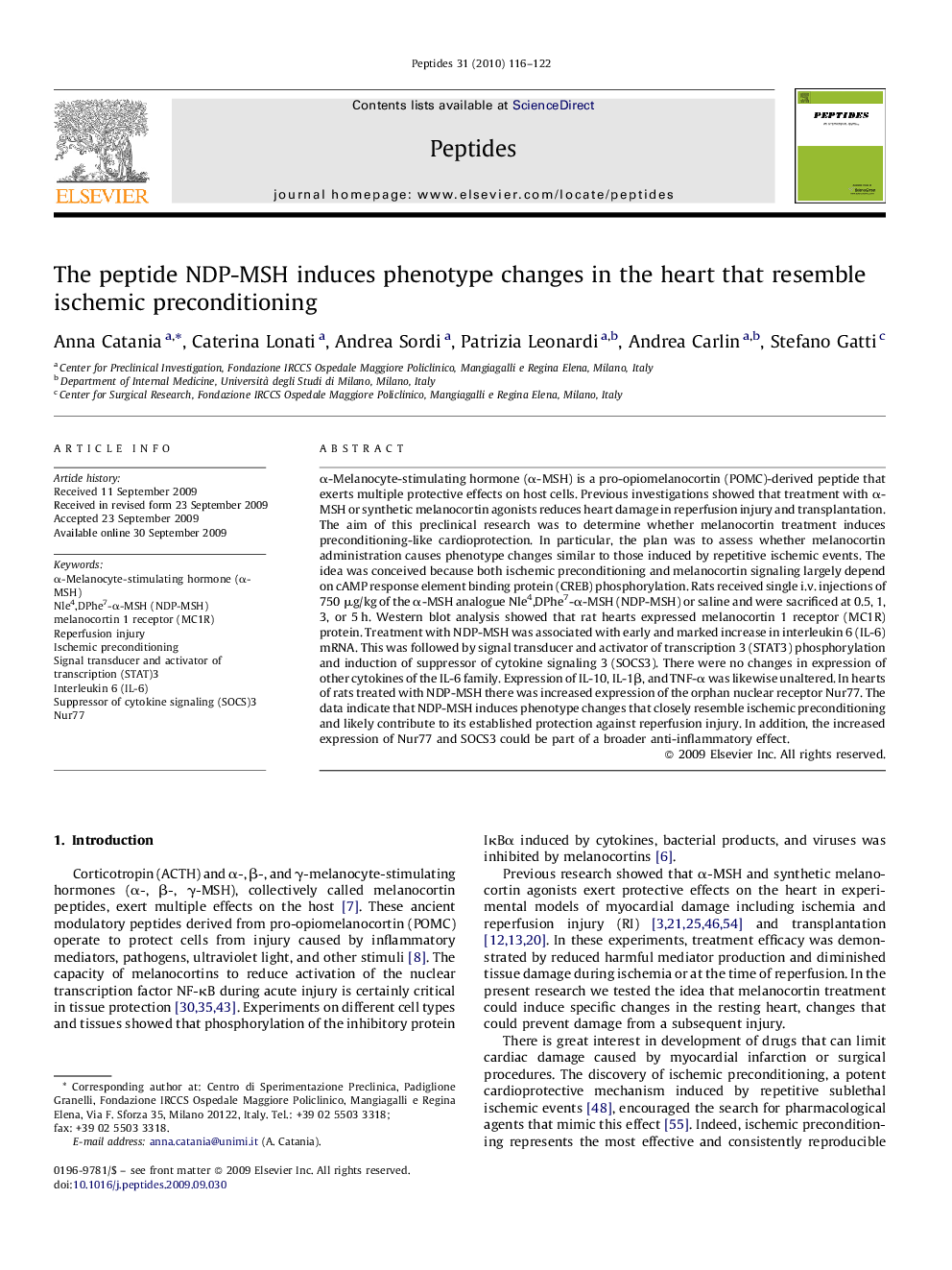| کد مقاله | کد نشریه | سال انتشار | مقاله انگلیسی | نسخه تمام متن |
|---|---|---|---|---|
| 10836011 | 1066378 | 2010 | 7 صفحه PDF | دانلود رایگان |
عنوان انگلیسی مقاله ISI
The peptide NDP-MSH induces phenotype changes in the heart that resemble ischemic preconditioning
دانلود مقاله + سفارش ترجمه
دانلود مقاله ISI انگلیسی
رایگان برای ایرانیان
کلمات کلیدی
موضوعات مرتبط
علوم زیستی و بیوفناوری
بیوشیمی، ژنتیک و زیست شناسی مولکولی
زیست شیمی
پیش نمایش صفحه اول مقاله

چکیده انگلیسی
α-Melanocyte-stimulating hormone (α-MSH) is a pro-opiomelanocortin (POMC)-derived peptide that exerts multiple protective effects on host cells. Previous investigations showed that treatment with α-MSH or synthetic melanocortin agonists reduces heart damage in reperfusion injury and transplantation. The aim of this preclinical research was to determine whether melanocortin treatment induces preconditioning-like cardioprotection. In particular, the plan was to assess whether melanocortin administration causes phenotype changes similar to those induced by repetitive ischemic events. The idea was conceived because both ischemic preconditioning and melanocortin signaling largely depend on cAMP response element binding protein (CREB) phosphorylation. Rats received single i.v. injections of 750 μg/kg of the α-MSH analogue Nle4,DPhe7-α-MSH (NDP-MSH) or saline and were sacrificed at 0.5, 1, 3, or 5 h. Western blot analysis showed that rat hearts expressed melanocortin 1 receptor (MC1R) protein. Treatment with NDP-MSH was associated with early and marked increase in interleukin 6 (IL-6) mRNA. This was followed by signal transducer and activator of transcription 3 (STAT3) phosphorylation and induction of suppressor of cytokine signaling 3 (SOCS3). There were no changes in expression of other cytokines of the IL-6 family. Expression of IL-10, IL-1β, and TNF-α was likewise unaltered. In hearts of rats treated with NDP-MSH there was increased expression of the orphan nuclear receptor Nur77. The data indicate that NDP-MSH induces phenotype changes that closely resemble ischemic preconditioning and likely contribute to its established protection against reperfusion injury. In addition, the increased expression of Nur77 and SOCS3 could be part of a broader anti-inflammatory effect.
ناشر
Database: Elsevier - ScienceDirect (ساینس دایرکت)
Journal: Peptides - Volume 31, Issue 1, January 2010, Pages 116-122
Journal: Peptides - Volume 31, Issue 1, January 2010, Pages 116-122
نویسندگان
Anna Catania, Caterina Lonati, Andrea Sordi, Patrizia Leonardi, Andrea Carlin, Stefano Gatti,